英雄五指山圣母万泉河
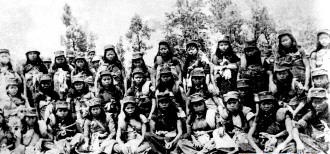
蒲文强
2021年8月21日
举目英雄五指山,壮汉威武头顶天。
环望南海观玉宇,飒爽英姿柱国安。
纵横群山百数里,琼崖纵队忆当年。
万泉滴露成飞瀑,五指百川万泉河。
泉湧飞流三千尺,凝是九天银河开。
万泉百溪潺潺水,碧海蓝天千山绿。
林森鸟飞蝶恋花,高天气静燕戏闹。
回望盘古开天地,五指万泉山河在。
惊天动地红色史,琼崖纵队[1]泣鬼神。
红军司令冯白驹[2],足智多谋掌帅印。
一代战神垂干古,海南大地一丰碑。
一九二七年九月,琼崖革命军[3]成立。
二十三年[4]旗不倒,对党忠诚意志坚。
六年找党[5]艰辛路,绕行万里通中央。
南征北战万般苦,孤军奋战几十载。
抗日战争立大功[6],消灭日伪越数千。
艰苦卓绝反围剿[7],与世隔绝八个月。
大刀斗笠红缨枪,深山老林求生存。
舍生忘死军民情,山不藏人人藏人。
野果野菜蕉叶被,母瑞山中斗敌顽。
慈祥圣母万泉河[8],诞生红色娘子军[9]。
巾帼英雄红军连,转战千里奏凯旋。
㴝族英雄王国兴[10],白沙起义高举旗。
琼岛振动炸惊雷,五干黎民杀声起。
三十万众根据地,诚心拥护共产党。
王国兴受主席赞[11],主动找党第一功。
孤军奋战琼崖军,五千六百人牺牲。
解放海南当先锋,琼州海峽是天险。
奉命接应[12]抢海淮,渡海大军近三万。
英勇四野登琼岛,里应外合夺奇胜[13]。
二万健儿琼纵兵,此时仍穿红军衣[14]。
吃尽千辛万般苦,肃然起敬兄弟泪。
战旗一面天地间,华夏生辉躍千秋。
二十三年战争史,一部惊天动地诗。
往事依稀尤难忘,千秋万代永铭记。
人间仙境通什峒[15],珍禽异兽万千种。
中国原始亚马逊,风光水滿河自然。
喜看彩蝶百鸟飞,雨林如海人如黛。
峽谷漂流惬意升,海子游船云中行。
万泉河上轶事多,文宗皇帝[16]恩图报。
安定县升南建州,钦命知州为王官。
多河圣命万泉河,文宗青梅乘船处。
万里流放心酸事,爱情帝位双丰收。
太平瀑布兰米海,南国风情动地歌。
篝火晚会竹竿舞,民族特色琼岛风。
流连忘返千川美,风情万种百溪秀。
注释:
[1] 琼崖纵队是中国共产党在海南岛领导的一支人民武装,是以1927年9月海南岛农民起义队伍为基础组建的。这支人民武装在土地革命战争、抗日战争和解放战争中经历了长期艰苦卓绝的斗争考验,创立了以五指山为中心的革命根据地。
[2] 冯白驹(1903—1973),广东琼山 (今海口市琼山区)人。冯白驹是一位有能力的革命领袖,他出生于海南岛琼上县,毕业于上海大学,1926年加入中国共产党。无产阶级革命家,原名裕球,又名继周、布文 。琼崖革命武装和根据地创建人。被周恩来誉为“琼崖人民的一面旗帜”。 历任中共琼山县委书记、琼山县苏维埃政府主席 ,琼崖讨逆革命军第六路军党代表,中共澄迈县委书记、琼崖特委书记;琼崖民众抗日自卫团第十四区独立队队长、独立总队队长兼政治委员,琼崖抗日游击队独立纵队司令员兼政治委员; 琼崖临时人民政府主席,琼崖纵队司令员兼政治委员;中共海南区委书记、海南军区司令员兼政治委员、海南军政委员会主任 ,海南行署主任、中共中央华南分局统战部部长、中共广东省委书记处书记,广东省、浙江省副省长等职 [6]
[3] 1927年4月12日,蒋介石发动反革命政变后,国民党琼崖当局亦于4月21日发动清党大屠杀。中共琼崖特委为适应斗争形势,于7月底将琼山、文昌、定安、琼东、乐会(琼东、乐会今已合并为琼海)、万宁、陵水、澄迈、临高等县农民武装共1000余人,编为琼崖讨逆革命军第1~9路军。中共中央八七会议后,琼崖特委决定举行全琼武装起义。9月23日,东路讨逆革命军700余人,在特委书记杨善集、讨逆革命军副总司令陈永芹指挥下,首先向驻嘉积市(今属琼海)的国民党军据点椰子寨发起进攻,歼其50余人,接着,乘胜向嘉积市发展进攻。琼山、澄迈、临高、儋县(今儋州)等县讨逆革命军为配合东路行动,同时举行武装起义。东路讨逆革命军在向嘉积市发展进攻中失利,杨善集、陈永芹牺牲。10月12日,在讨逆革命军总司令冯平指挥下,西路讨逆革命军2个连和农军700余人,向新州镇(今属儋州)发动进攻,歼守军60余人,遂撤回附近农村。11月初,琼崖讨逆革命军改称为琼崖工农革命军,冯平任总司令,王文明任党代表,辖东、中、西三路军总指挥部,共1400余人,下旬至12月,东路军300余人,配合陵水县农军1000多人,先后攻占陵水县新村港、藤桥圩和三亚镇,歼国民党军400余人;中路、西路军和农军共1800余人,也先后攻占21座圩镇,歼国民党军600余人。1928年2月,琼崖工农革命军改称为琼崖工农红军。3月,琼崖工农红军在反击国民党军第10师4000余人的“清剿”中遭受严重损失,冯平牺牲,余部130多人由王文明率领转移到定安县母瑞山区坚持斗争。
[4] 中国人民解放军琼崖纵队,在党中央和毛泽东同志的领导下,坚持孤岛奋战,艰苦卓绝,经历了土地革命战争、抗日战争和解放战争,二十三年红旗不倒。
[5]1940年—1946年,由于在战争中,琼崖地方党组织电台遭到敌人破坏,失去了与与延安的中共中央和广东省委的联系。时间长达到6年之久。
[6] 抗日战争时期,中共琼崖特委及其领导的琼崖抗日独立纵队坚决执行中国共产党全面抗战的路线,在敌后广泛发动群众,建立抗日根据地,开展游击战争,使侵琼日军陷于人民战争的汪洋大海之中。整个抗战中,琼崖独立纵队对敌伪作战2200余次,毙伤俘日伪军5800多人;缴获各种武器弹药和各种物资一大批。一系列有效斗争,阻滞了日军的“南进”,打破了日本建设所谓“大东亚新秩序”的企图,有力支援了东南亚人民的抗日斗争和美、英等盟国在太平洋战场的作战,在抗日战争和世界反法西斯战争中,作出了重要贡献。
[7] 1928年,国民党军对琼崖纵队进行疯狂“围剿”,琼崖纵队剩余部队和琼崖苏维埃政府机关约600余人,冒着枪林弹雨被迫转移到海南定安县母瑞山。1932年,国民党集中兵力,针对琼崖纵队进行了第二次“围剿”,琼崖纵队再一次受到了重创,主力几乎损失殆尽。中共琼崖特委书记冯白驹带领仅剩的100多人,转移至母瑞山原始森林中,与国民党军队进行了长达8个多月艰苦卓绝的斗争。
[8] 万泉河是黎人民和沿岸各族人民的母亲河,圣洁、清澈、纯净。万泉河,古称多河,中国海南岛第三大河,位于中国海南省海南岛东部。万泉河有两源:南支乐会水为干流,长109公里,发源于五指山林背村南岭。北支定安水,源出黎母岭南。两水在琼海市合口嘴会合始称万泉河,经嘉积至博鳌入南海。全长157公里(另有162、163公里之说),流域面积3683平方公里。
[9] 土地革命战争时期,1931年3月16日,为适应斗争形势需要,万泉河流域的琼海县(时属乐会县)苏维埃政府创建了赤色女子军连,同年5月1 日改编为中国工农红军第二独立师第三团女子军特务连,是由冯白驹领导的琼崖纵队红三团下属的一支女性战斗部队。这就是举世闻名的“红色娘子军”,曾在第二次琼崖苏区反“围剿”中担任掩护任务,其事迹因被改编成芭蕾舞剧《红色娘子军》而被全国人民所熟知。
[10] 1942年6月,王国兴秘密召开各保保长会议,大家一致同意起义反抗。8月,又开了第二次秘密会议,组织了起义队伍。12月,第三次秘密会议作了起义的军事部署。决定于1943年7月20日举行全县总暴动。推举王国兴为起义总指挥。但因泄露了起义风声。17日凌晨,起义提前进行。白沙县的男女老少全部投入战斗。起义军攻打感恩、昌江、乐东、崖县等县府。26日,白沙起义达到高潮。仅白沙县直接参加战斗的黎胞就有3万人,在战斗中歼敌800余人,缴获枪支300多支。国民党胆战心惊,仓皇溃逃。
[11] 1949年夏,王国兴受党中央之邀,到北平参加政治协商会议,并当选为全国政协第一届委员以及中央人民政府民族事务委员会委员。1950年5月1日,海南解放。王国兴回到海南,1952年,他当选为海南岛黎族苗族自治区主席。1955年,自治区改称自治州,王国兴任州长。1953年,被选为全国人民代表大会代表,5月20日,加入中国共产党。毛主席在北京接见王国兴时,表扬他是少数民族头领主动找党第一人。
[12]1949年12月,琼崖纵队遵照中共中央关于配合中国人民解放军第四野战军解放海南岛的指示,在动员岛上军民迎接主力部队渡海登入的同时,还派出部分干部,带领一批船工和船只,到达雷州半岛,积极配合渡海登入兵团作好准备。 琼崖纵队与渡海大军胜利会师 1950年3-4月初,纵队以5个团先后4次成功地接应第15兵团两个加强营和两个加强团偷渡登入,为主力部队大规模渡海作战创造了有利条件。4月16日,兵团主力实施强渡登入作战,琼崖纵队以全部10个团分别担任接应和配合任务。17日,兵团主力登入成功后,琼崖纵队即配合主力进行琼北地区的围歼战和追歼逃跑的国民党军,至5月1日全岛解放。此时琼崖纵队总人数到达2.5万余人。此后,琼崖纵队又担负剿匪和保卫海防的任务。1950年7月,根据中南军区命令,琼崖纵队改编为中国人民解放军海南军区。
[13] 琼崖纵是土生土长的海南岛人组成,对于战争环境中的地形地物,特别是敌人的兵力布局和明碉暗堡了如指掌,并以迅雷不及掩耳之势抢占滩头阵地,为第四野战军近三万主力登岛作战立下了汗马功劳。1950年4月16日19时30分,韩先楚率领中国人民解放军第40军和第43军共8个团2.5万余人,分乘380艘帆船、32艘机帆船,从雷州半岛南端启航。经过与国民党军舰彻夜海战,突破了海上封锁,成功在海南岛登陆,之后在琼崖纵队的配合下,向岛上的国民党军发动全面进攻。5月1日,海南岛全面解放。
[14] 在解放海南岛的战役中,琼崖纵队的贡献功不可没,他们在一座小岛上,孤军奋战23年,他们隐藏在海南岛的原始丛林中,很多官兵连衣服都没有,但是依然苦苦地坚守着,当解放军登上海南岛的时候,发现两万多名琼崖纵队的官兵还穿着当年红军的衣服,在付出了巨大的贡献和牺牲后,他们终于迎来了海南岛的解放。
[15] 通什峒是五指山的別称。
[16] 1328年7月大元帝国的第十位皇帝也孙铁木耳在北京去世了。经宫廷的帝位之争,图帖睦尔被召回京即帝位。在即将离别万泉河时,太子恋恋不舍,绅士王官率领村民夹岸欢送,握拳齐呼,“太子万全,一路万全。”太子登基后的第三年即1330年,文宗皇帝不忘王官的救主之恩,诏文将原海南定安县提升为南建州,敕封王官为知州,将“多河”命名为“万泉河”。以此报答万泉河两岸的百姓送他“万全”的款款深情。当地的老百姓为了纪念这段历史,在当年送太子与青梅登船之处,建起了中水庙祭拜王官,修起了乘船渡口,命名为文宗渡口。
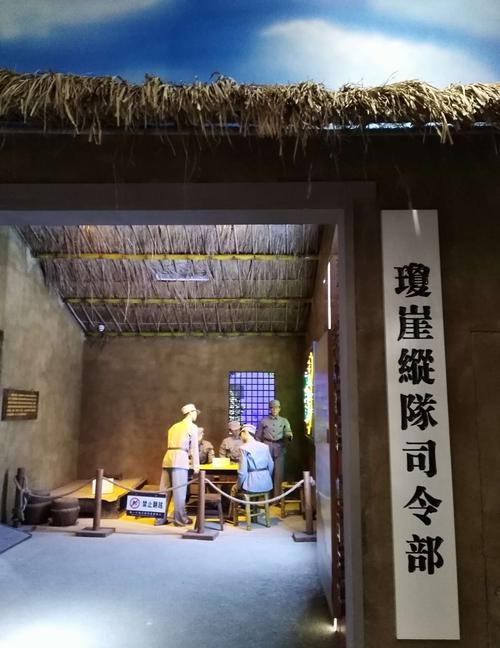
Hero Wuzhishan virgin Wanquan River
Pu Wenqiang
August 21, 2021
Raise your eyes to the heroic Wuzhishan mountain, and make a strong man powerful and powerful.
Looking around the South China Sea and watching Yuyu, you can see the valiant and heroic posture and national security.
Hundreds of miles across the mountains, QiongYa column recalls that year.
Ten thousand springs are dripping into waterfalls, with five fingers pointing to hundreds of rivers and ten thousand springs.
The spring flows three thousand feet, and the condensation is the opening of the Milky way in nine days.
Thousands of springs and streams are gurgling water, blue sea, blue sky and thousands of mountains are green.
Lin Sen's birds fly, butterflies love flowers, and Yan play in high weather.
Looking back at Pangu's open world, there are five fingers and ten thousand springs.
Earth shaking red history, QiongYa column [1] weeping ghosts and gods.
Feng Baiju, commander of the Red Army [2], is resourceful and in charge.
A generation of God of war hangs down in ancient times and is a monument on the earth of Hainan.
In September 1927, QiongYa Revolutionary Army [3] was established.
For 23 years [4], the flag has not fallen, and the will to be loyal to the party is firm.
Six years to find the party [5] difficult road, detour thousands of miles to the Central Committee.
It has been hard to fight north and south for decades.
The war of resistance against Japan made great contributions [6] and wiped out thousands of Japanese puppets and Vietnamese.
It was arduous to counter encirclement and suppression [7] and isolated from the world for eight months.
Big knives, hats, red tassels, deep mountains and forests to survive.
He sacrificed his life to forget the feelings of the army and the people. The mountains are not hidden, and everyone is Tibetan.
Wild fruits, wild vegetables, banana leaves, and fierce enemies in murui mountain.
The gentle virgin Wanquan River [8] gave birth to the Red Detachment of women [9].
The heroine Red Army company has traveled thousands of miles to triumph.
Wang Guoxing, the hero of the Kan nationality [10], raised the flag in Baisha uprising.
Qiongdao vibrated and thundered, and the five cadres killed Li people.
300000 base areas sincerely support the Communist Party.
Wang Guoxing was praised by the chairman [11] and took the initiative to find the party's first merit.
The QiongYa army fought alone and 5600 people died.
When Hainan was liberated as a pioneer, Qiongzhou Strait was a natural danger.
He was ordered to take over [12] the sea and Huaihe River, and nearly 30000 troops crossed the sea.
Brave four wild climbs Qiongdao and cooperates inside and outside to win a wonderful victory [13].
Twenty thousand athletes, Qiong Zongbing, are still wearing red army clothes [14].
After a thousand hardships, I respect my brother's tears.
The flag of war is one side of heaven and earth, and China is shining for thousands of years.
Twenty three years of war history, an earth shaking poem.
The past is vaguely unforgettable. It will be remembered forever.
Tongshidong [15], a fairyland on earth, has thousands of rare birds and animals.
China's original Amazon, with natural scenery and rivers.
I like to see butterflies and birds flying, rainforests like the sea and people like Dai.
Canyon rafting is pleasant, and Haizi cruise ships travel in the clouds.
There are many anecdotes on Wanquan River, and Emperor Wenzong [16] Tu Bao.
Anding county was promoted to the south to establish a state, and the imperial magistrate was appointed as the king's official.
The multi river saint ordered Wanquan River, where Wenzong Qingmei took a boat.
Thousands of miles flow, rest assured of acid, love throne double harvest.
Taiping waterfall, lanmihai, southern style and moving song.
Bonfire party, bamboo pole dance, national characteristics, Qiongdao style.
Linger and forget to return, thousands of rivers are beautiful, thousands of customs and hundreds of streams are beautiful.
notes:
[1] QiongYa column is a people's armed force led by the Communist Party of China in Hainan Island. It was established based on the peasant uprising team in Hainan Island in September 1927. This people's armed force experienced a long and arduous struggle in the Agrarian Revolutionary War, the war of resistance against Japan and the war of liberation, and established a revolutionary base area centered on Wuzhishan.
[2] Feng Baiju (1903-1973) was born in Qiongshan, Guangdong Province (now Qiongshan District, Haikou City). Feng Baiju is a capable revolutionary leader. He was born in qiongshang County, Hainan Island. He graduated from Shanghai University and joined the Communist Party of China in 1926. Proletarian revolutionist, formerly known as Yuqiu, also known as Jizhou and Buwen. Founder of QiongYa revolutionary armed forces and base area. Zhou Enlai praised it as "a banner of QiongYa people". He has successively served as secretary of the CPC Qiongshan county Party committee, chairman of the Soviet government of Qiongshan County, party representative of the sixth Route Army of the QiongYa counter revolutionary army, Secretary of the CPC Chengmai County Party committee and Secretary of the QiongYa Special Committee; The leader of the independent unit of the 14th District of the QiongYa people's Anti Japanese Self Defense Corps, the leader and political member of the independent corps, and the commander and political member of the independent column of the QiongYa Anti Japanese guerrilla; Chairman of QiongYa interim people's government, commander and political member of QiongYa column; Secretary of the CPC Hainan Regional Committee, commander and political commissar of the Hainan Military Region, director of the Hainan Military and political Commission, director of the Hainan administrative office, director of the United Front Work Department of the South China branch of the CPC Central Committee, Secretary of the Secretariat of the CPC Guangdong Provincial Committee, vice governors of Guangdong Province and Zhejiang Province, etc. [6]
[3] On April 12, 1927, after Chiang Kai Shek launched a counter revolutionary coup, the Kuomintang QiongYa authorities also launched the Qing massacre on April 21. In order to adapt to the struggle situation, the CPC QiongYa special committee organized more than 1000 peasant armed forces in Qiongshan, Wenchang, Ding'an, Qiongdong, Yuehui (Qiongdong and Yuehui have now been merged into Qionghai), Wanning, Lingshui, Chengmai and Lingao counties into the 1st ~ 9th route armies of QiongYa rebel Revolutionary Army at the end of July. After the August 7th Meeting of the CPC Central Committee, QiongYa special committee decided to hold an all QiongYa armed uprising. On September 23, under the command of Yang Shanji, Secretary of the special committee and Chen Yongqin, deputy commander-in-chief of the revolutionary army, more than 700 people of the East Road attacked yezizhai, the Kuomintang stronghold in Jiaji city (now Qionghai), annihilated more than 50 people, and then took advantage of the victory to attack Jiaji city. Qiongshan, Chengmai, Lingao, Danxian (now Danzhou) and other counties held an armed uprising to cooperate with the East Road operation. Yang Shanji and Chen Yongqin died when the eastern revolutionary army failed in the attack on the development of Jiaji city. On October 12, under the command of Feng Ping, commander-in-chief of the counter revolutionary army, two companies of the counter revolutionary army and more than 700 agricultural troops launched an attack on Xinzhou town (now Danzhou), annihilated more than 60 defenders, and then withdrew to the nearby countryside. In early November, QiongYa revolutionary army was renamed QiongYa workers' and peasants' revolutionary army, with Feng Ping as commander-in-chief and Wang Wenming as party representative. It has jurisdiction over the general headquarters of the East, middle and West Route armies, with a total of more than 1400 people. From late December to December, more than 300 people of the East Route Army, together with more than 1000 people of the agricultural army of Lingshui County, successively captured xincungang, tengqiaowei and Sanya town of Lingshui County, and annihilated more than 400 people of the Kuomintang army; More than 1800 people from the middle route, West Route Army and agricultural army also occupied 21 polder towns and annihilated more than 600 Kuomintang troops. In February 1928, QiongYa workers' and peasants' revolutionary army was renamed QiongYa workers' and peasants' Red Army. In March, the QiongYa workers' and peasants' red army suffered serious losses in the "suppression" against more than 4000 people of the 10th division of the Kuomintang army. Feng Ping died, and more than 130 people of the rest were transferred to murui mountain area of Ding'an County under the leadership of Wang Wenming.
[4] Under the leadership of the Party Central Committee and Comrade Mao Zedong, the QiongYa column of the Chinese people's Liberation Army has persisted in fighting on an isolated island and worked extremely hard. It has experienced the Agrarian Revolutionary War, the war of resistance against Japan and the war of liberation, and the red flag has not fallen for 23 years.
[5] From 1940 to 1946, QiongYa local party organization radio station was destroyed by the enemy during the war, and lost contact with the CPC Central Committee and Guangdong provincial Party committee in Yan'an. For up to six years.
[6] During the Anti Japanese War, the CPC QiongYa special committee and the QiongYa Anti Japanese independent column under its leadership resolutely implemented the CPC's line of comprehensive anti Japanese War, widely mobilized the masses behind the enemy, established Anti Japanese base areas and carried out guerrilla war, so that the Japanese invading QiongYa army fell into the vast ocean of people's war. Throughout the Anti Japanese War, QiongYa independent column fought against the enemy and puppets more than 2200 times, killing and wounding more than 5800 captured Japanese and puppet troops; A large number of weapons, ammunition and materials were seized. A series of effective struggles blocked the Japanese army's "Southward advance", broke Japan's attempt to build the so-called "new order in Greater East Asia", effectively supported the Anti Japanese struggle of the people in Southeast Asia and the operations of the United States, Britain and other allies in the Pacific battlefield, and made important contributions to the Anti Japanese War and the world anti fascist war.
[7] In 1928, the Kuomintang army carried out a crazy "encirclement and suppression" on QiongYa column. The remaining troops of QiongYa column and about 600 people of QiongYa Soviet government were forced to move to murui mountain, Ding'an County, Hainan despite a hail of bullets. In 1932, the Kuomintang concentrated its forces and carried out the second "encirclement and suppression" against QiongYa column. QiongYa column was hit hard again, and the main force was almost lost. Feng Baiju, Secretary of the QiongYa special committee of the Communist Party of China, led the remaining more than 100 people to move to the primeval forest of murui mountain and waged an arduous struggle with the Kuomintang army for more than eight months.
[8] Wanquan River is the mother river of the people of Lebanon and the people of all ethnic groups along the coast. It is holy, clear and pure. Wanquan River, formerly known as DUOHE River, is the third largest river in Hainan Island, China. It is located in the east of Hainan Island, Hainan Province, China. Wanquan River has two sources: the South Branch Lehui water is the main stream, 109 kilometers long, originating from Nanling, Linbei village, Wuzhi Mountain. The North Branch of Ding'an water originates from the south of Li Mu Ling. When the two rivers meet at hekouzi, Qionghai City, they are called Wanquan River. After Jiaji, they reach Boao and enter the South China Sea. The total length is 157 km (another 162 and 163 km), and the drainage area is 3683 square kilometers.
[9] During the Agrarian Revolutionary War, on March 16, 1931, in order to meet the needs of the struggle situation, the Soviet government of Qionghai county (then Lehui county) in Wanquan River Basin established the red women's army company, which was reorganized into the women's army spy company of the third regiment of the second independent division of the Chinese workers' and peasants' Red Army on May 1 of the same year. It is a women's combat force subordinate to the third regiment of the Red Army of QiongYa column led by Feng Baiju. This is the world-famous "red women's army", which once served as a cover task in the second anti "encirclement and suppression" in QiongYa Soviet area. Its deeds are well known by the people all over the country because it was adapted into the ballet "red women's army".
[10] In June 1942, Wang Guoxing secretly held a meeting of the chiefs of the security guards, and everyone agreed to revolt. In August, a second secret meeting was held to organize the uprising team. In December, the third secret meeting made the military deployment of the uprising. It was decided to hold a general riot in the county on July 20, 1943. Wang Guoxing was elected commander in chief of the uprising. But because of the news of the uprising. In the early morning of the 17th, the uprising was carried out ahead of schedule. All men, women, old and young in Baisha County went into battle. The rebels attacked the county governments of Thanksgiving, Changjiang, Ledong and Yaxian. On the 26th, the Baisha uprising reached a climax. In Baisha County alone, 30000 Li cells directly participated in the battle, annihilated more than 800 enemies and seized more than 300 guns. The Kuomintang was frightened and fled in a panic.
[11] In the summer of 1949, at the invitation of the Party Central Committee, Wang Guoxing went to Peiping to participate in the Political Consultative Conference and was elected as a member of the first CPPCC National Committee and a member of the Ethnic Affairs Committee of the Central People's government. On May 1, 1950, Hainan was liberated. Wang Guoxing returned to Hainan. In 1952, he was elected chairman of the Li and Miao Autonomous Region of Hainan Island. In 1955, the autonomous region was renamed Autonomous Prefecture, and Wang Guoxing was appointed governor. In 1953, he was elected to the National People's Congress and joined the Communist Party of China on May 20. When Chairman Mao met Wang Guoxing in Beijing, he praised him as the leader of ethnic minorities and took the initiative to find the first person of the party.
[12] In December 1949, in accordance with the instructions of the CPC Central Committee on cooperating with the fourth field army of the Chinese people's Liberation Army to liberate Hainan Island, while mobilizing the army and people on the island to welcome the main force to cross the sea and board, QiongYa column also sent some cadres to lead a group of boatmans and ships to Leizhou Peninsula to actively cooperate with the cross the sea and board the corps to make preparations. QiongYa column successfully joined forces with the sea crossing army. From March to early April 1950, the column successfully received two reinforced battalions and two reinforced regiments of the 15th Corps four times, creating favorable conditions for the large-scale sea crossing operation of the main force. On April 16, the main force of the Corps carried out the forced crossing and boarding operation, and QiongYa column took on the tasks of receiving and cooperating with all 10 regiments. On the 17th, after the main force of the Corps successfully boarded, QiongYa column cooperated with the main force to carry out the encirclement and annihilation war in Qiongbei area and chase and annihilate the fleeing Kuomintang army, and the whole island was liberated on May 1. At this time, the total number of QiongYa column reached more than 25000. Since then, QiongYa column undertook the task of suppressing bandits and defending coastal defense. In July 1950, according to the order of the Central South military region, QiongYa column was reorganized into the Hainan Military Region of the Chinese people's Liberation Army.
[13] Qiongyazong is a native of Hainan Island. It knows the terrain and features in the war environment, especially the enemy's force layout and open and hidden blockhouses, and seizes the beachhead position with lightning speed, which has contributed to the nearly 30000 main force of the fourth field army landing on the island. At 1930 on April 16, 1950, Han Xianchu led eight regiments of the 40th and 43rd armies of the Chinese people's Liberation Army, with more than 25000 people, and set sail from the southern end of Leizhou Peninsula in 380 sailboats and 32 motor sailboats. After an all night naval battle with Kuomintang warships, he broke through the maritime blockade and successfully landed on Hainan Island. Then, with the cooperation of QiongYa column, he launched an all-round attack on the Kuomintang army on the island. On May 1, Hainan Island was fully liberated.
[14] In the campaign to liberate Hainan Island, QiongYa column made great contributions. They fought alone on an island for 23 years. They hid in the primitive jungle of Hainan Island. Many officers and soldiers didn't even have clothes, but they still persevered. When the people's Liberation Army landed on the South Island of Shanghai, it found that more than 20000 officers and soldiers of QiongYa column were still wearing the clothes of the Red Army, After making great contributions and sacrifices, they finally ushered in the liberation of Hainan Island.
[15] Tongshidong is another name for Wuzhishan.
[16] In July 1328, sun tiemu'er, the tenth emperor of the Yuan Empire, died in Beijing. After the dispute over the throne of the court, tutimer was recalled to Beijing, that is, the throne. When he was about to leave Wanquan River, the prince was reluctant to part with him. The gentleman and royal officials led the villagers to see him off, clenched their fists and shouted, "the prince is all right, all the way." In 1330, the third year after the crown prince ascended the throne, Emperor Wenzong did not forget the Savior's kindness of the king's officials. The imperial edict promoted the former Ding'an County in Hainan to nanjianzhou, granted the king's officials as prefects, and named "many rivers" as "Wanquan River". In order to repay the people on both sides of Wanquan River for sending him "Wanquan". In order to commemorate this history, the local people built a Zhongshui temple to worship the royal officials and built a ferry named Wenzong ferry at the place where they sent the prince and green plum aboard the ship.
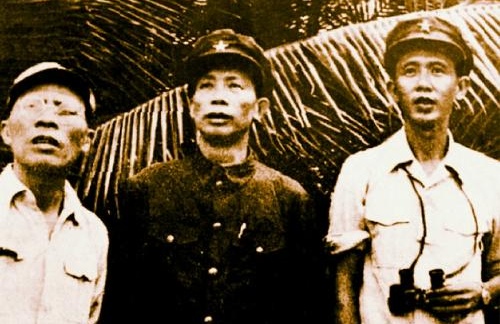
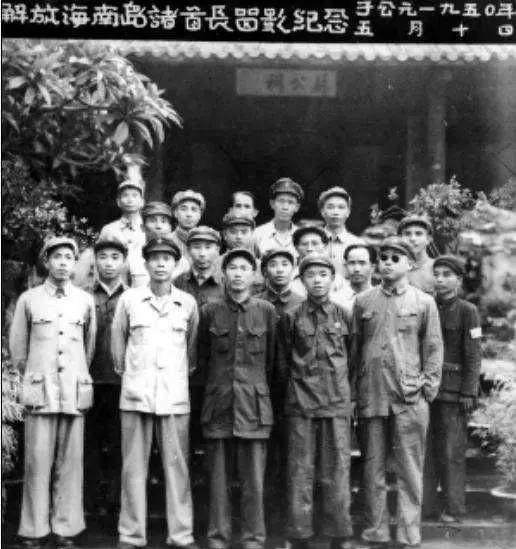
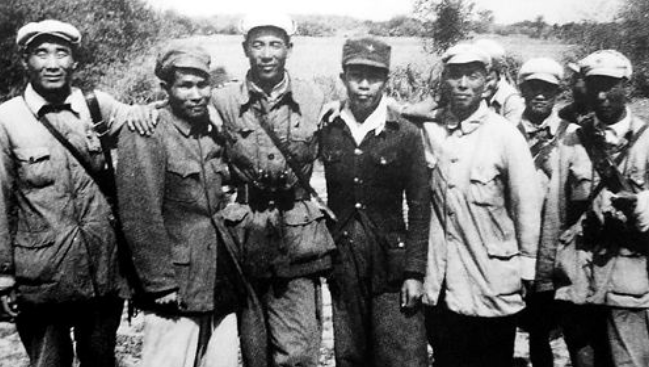
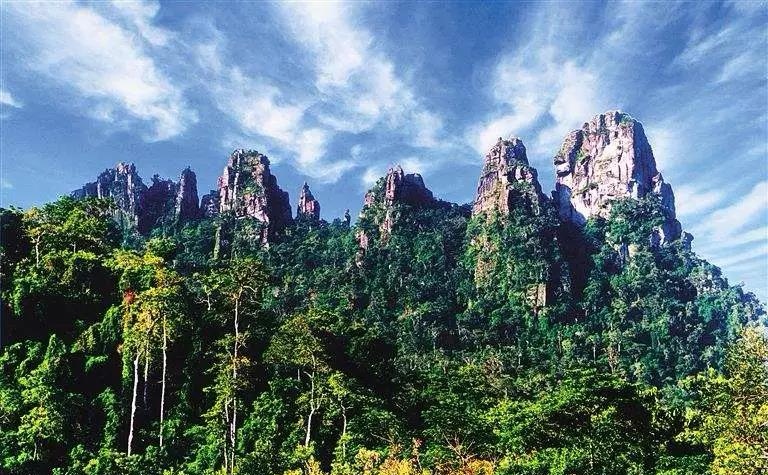

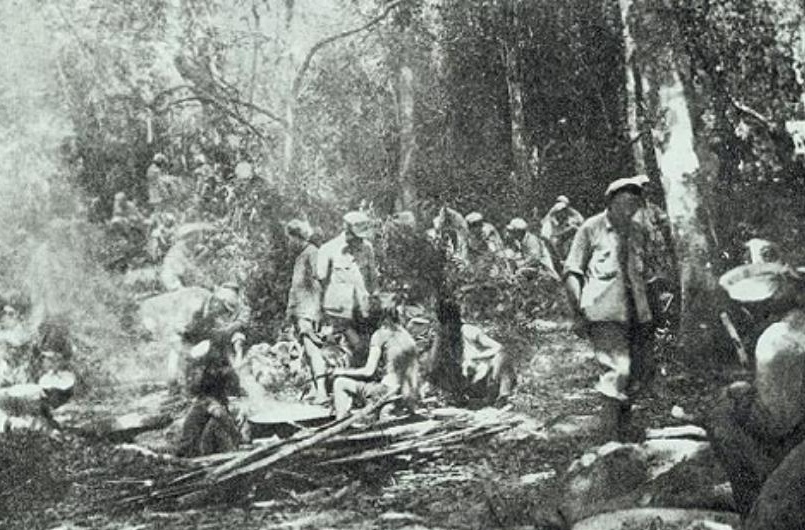
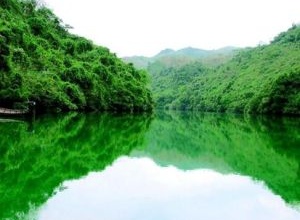

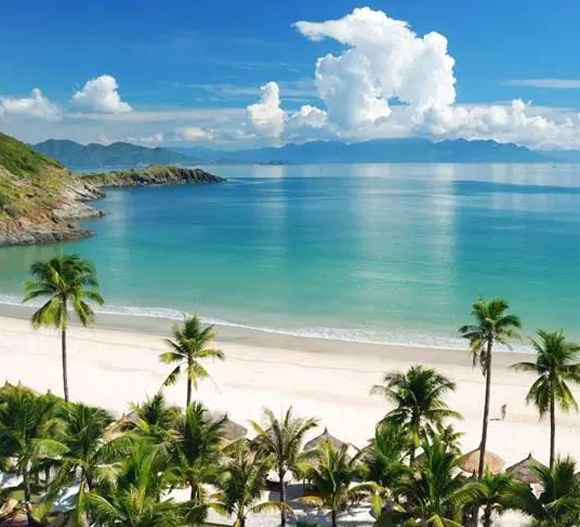











蒲文强